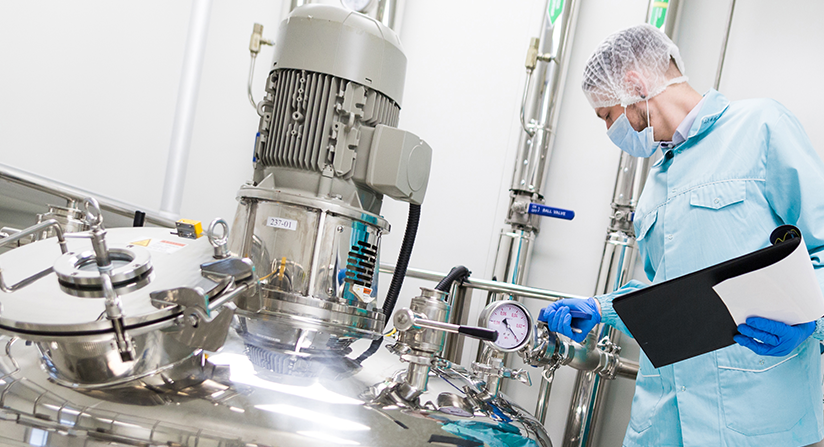
The National Institute of Standards and Technology (NIST), which was established in 1901, is one of America's oldest physical science laboratories. Its mission is science and technology to improve quality of life and productivity in American industry. Located in Gaithersburg, Maryland, NIST is a member of the United States Department of Commerce. The NIST staff collaborates with federal agencies to develop standards and metrics that will improve productivity, economic security, and facilitate trade. NIST is an important partner in improving U.S. industrial competitiveness and quality assurance.
NIST's mission seeks to improve people's lives by encouraging scientific and technological innovation, developing and maintaining standards of physical measurement across the country, and encouraging the growth of U.S. industry innovation. NIST has two locations in Gaithersburg, Maryland, and Boulder, Colorado. NIST develops standards, metrics and best practices. NIST also conducts research in order to improve the technological infrastructure of the U.S.
The National Institute of Standards and Technology, (NIST), was originally created to be a metrology organization. In the early days, the Bureau of Standards focused on solving national problems in science, technology, and commerce. For a wide range of industries, standards were developed including electronics, electrical safety and clothing. The Bureau of Standards had a manufacturing facility for optical glass and was involved in multiple issues during World War I.

NIST also develops standards, metrics, and best practices for a variety of industries, including electronics, computers, transportation, manufacturing, and public health. NIST assists industry to develop procedures to improve manufacturing production. NIST also creates Federal Information Processing Standards (or FIPS), which are approved and maintained by the Secretary of Commerce.
The National Institute of Standards and Technology also publishes the Journal of Research of the National Institute of Standards and Technology, the official scientific journal of the organization. The Nature Index contains information about NIST's research outputs. NIST is North America's largest research centre.
In 1988, the National Bureau of Standards (NBS) was reorganized as NIST, a name that was intended to reflect the broad scope of NBS's mission. The Omnibus Trade and Competitiveness Act of 1998, which was signed into law August 23, 1988, broadened the NBS's technical expertise and gave NIST new responsibilities. The law also explicitly confirmed traditional measurement services.
NIST will offer full service in measurement. It will also coordinate state extension services with federal technology transfers programs and expand its technology assistance to extensions services. To expand its reach, it will collaborate with an existing network. Workshops will be held on technological issues in order to make sure that NIST resources get used efficiently.

NIST will continue to be a partner in the improvement of U.S. Industrial Competitiveness by supporting American industries with technology standards and best practices. NIST helps federal agencies develop cost-effective programs. It places a strong emphasis on national security. While its recommendations do not have binding effect in the private sector they can be used as a guideline for federal agencies.
FAQ
What are the essential elements of running a logistics firm?
To be a successful businessman in logistics, you will need many skills and knowledge. For clients and suppliers to be successful, you need to have excellent communication skills. It is important to be able to analyse data and draw conclusions. You must be able to work well under pressure and handle stressful situations. To improve efficiency, you must be innovative and creative. You need to have strong leadership qualities to motivate team members and direct them towards achieving organizational goals.
You must be organized to meet tight deadlines.
What is the responsibility of a manufacturing manager?
A manufacturing manager must ensure that all manufacturing processes are efficient and effective. They should be alert for any potential problems in the company and react accordingly.
They should also be able and comfortable communicating with other departments like sales and marketing.
They should also be knowledgeable about the latest trends in the industry so they can use this information for productivity and efficiency improvements.
How does manufacturing avoid bottlenecks in production?
Avoiding production bottlenecks is as simple as keeping all processes running smoothly, from the time an order is received until the product ships.
This includes planning for capacity requirements as well as quality control measures.
The best way to do this is to use continuous improvement techniques such as Six Sigma.
Six Sigma management is a system that improves quality and reduces waste within your organization.
It's all about eliminating variation and creating consistency in work.
What are the products and services of logistics?
Logistics involves the transportation of goods from point A and point B.
They include all aspects associated with transport including packaging, loading transporting, unloading storage, warehousing inventory management customer service, distribution returns and recycling.
Logisticians ensure that the product is delivered to the correct place, at the right time, and under safe conditions. They provide information on demand forecasts as well stock levels, production schedules and availability of raw material.
They coordinate with vendors and suppliers, keep track of shipments, monitor quality standards and perform inventory and order replenishment.
Statistics
- It's estimated that 10.8% of the U.S. GDP in 2020 was contributed to manufacturing. (investopedia.com)
- According to the United Nations Industrial Development Organization (UNIDO), China is the top manufacturer worldwide by 2019 output, producing 28.7% of the total global manufacturing output, followed by the United States, Japan, Germany, and India.[52][53] (en.wikipedia.org)
- You can multiply the result by 100 to get the total percent of monthly overhead. (investopedia.com)
- (2:04) MTO is a production technique wherein products are customized according to customer specifications, and production only starts after an order is received. (oracle.com)
- In the United States, for example, manufacturing makes up 15% of the economic output. (twi-global.com)
External Links
How To
How to use the Just-In Time Method in Production
Just-intime (JIT), a method used to lower costs and improve efficiency in business processes, is called just-in-time. It's a way to ensure that you get the right resources at just the right time. This means that you only pay the amount you actually use. Frederick Taylor was the first to coin this term. He developed it while working as a foreman during the early 1900s. After observing how workers were paid overtime for late work, he realized that overtime was a common practice. He realized that workers should have enough time to complete their jobs before they begin work. This would help increase productivity.
JIT teaches you to plan ahead and prepare everything so you don’t waste time. You should also look at the entire project from start to finish and make sure that you have sufficient resources available to deal with any problems that arise during the course of your project. If you expect problems to arise, you will be able to provide the necessary equipment and personnel to address them. You won't have to pay more for unnecessary items.
There are several types of JIT techniques:
-
Demand-driven: This type of JIT allows you to order the parts/materials required for your project on a regular basis. This will enable you to keep track of how much material is left after you use it. This will allow you to calculate how long it will take to make more.
-
Inventory-based: This allows you to store the materials necessary for your projects in advance. This allows you to forecast how much you will sell.
-
Project-driven: This approach involves setting aside sufficient funds to cover your project's costs. You will be able to purchase the right amount of materials if you know what you need.
-
Resource-based JIT is the most widespread form. You assign certain resources based off demand. If you have many orders, you will assign more people to manage them. If you don't have many orders, you'll assign fewer people to handle the workload.
-
Cost-based : This is similar in concept to resource-based. But here, you aren't concerned about how many people your company has but how much each individual costs.
-
Price-based: This is a variant of cost-based. However, instead of focusing on the individual workers' costs, this looks at the total price of the company.
-
Material-based - This is a variant of cost-based. But instead of looking at the total company cost, you focus on how much raw material you spend per year.
-
Time-based JIT: A variation on resource-based JIT. Instead of focusing on how much each employee costs, you focus on how long it takes to complete the project.
-
Quality-based JIT - This is another form of resource-based JIT. Instead of thinking about how much each employee costs or how long it takes to manufacture something, you think about how good the quality of your product is.
-
Value-based JIT : This is the newest type of JIT. In this instance, you are not concerned about the product's performance or meeting customer expectations. Instead, you are focused on adding value to the marketplace.
-
Stock-based: This stock-based method focuses on the actual quantity of products being made at any given time. This method is useful when you want to increase production while decreasing inventory.
-
Just-in time (JIT), planning: This is a combination JIT/supply chain management. This refers to the scheduling of the delivery of components as soon after they are ordered. It's important because it reduces lead times and increases throughput.